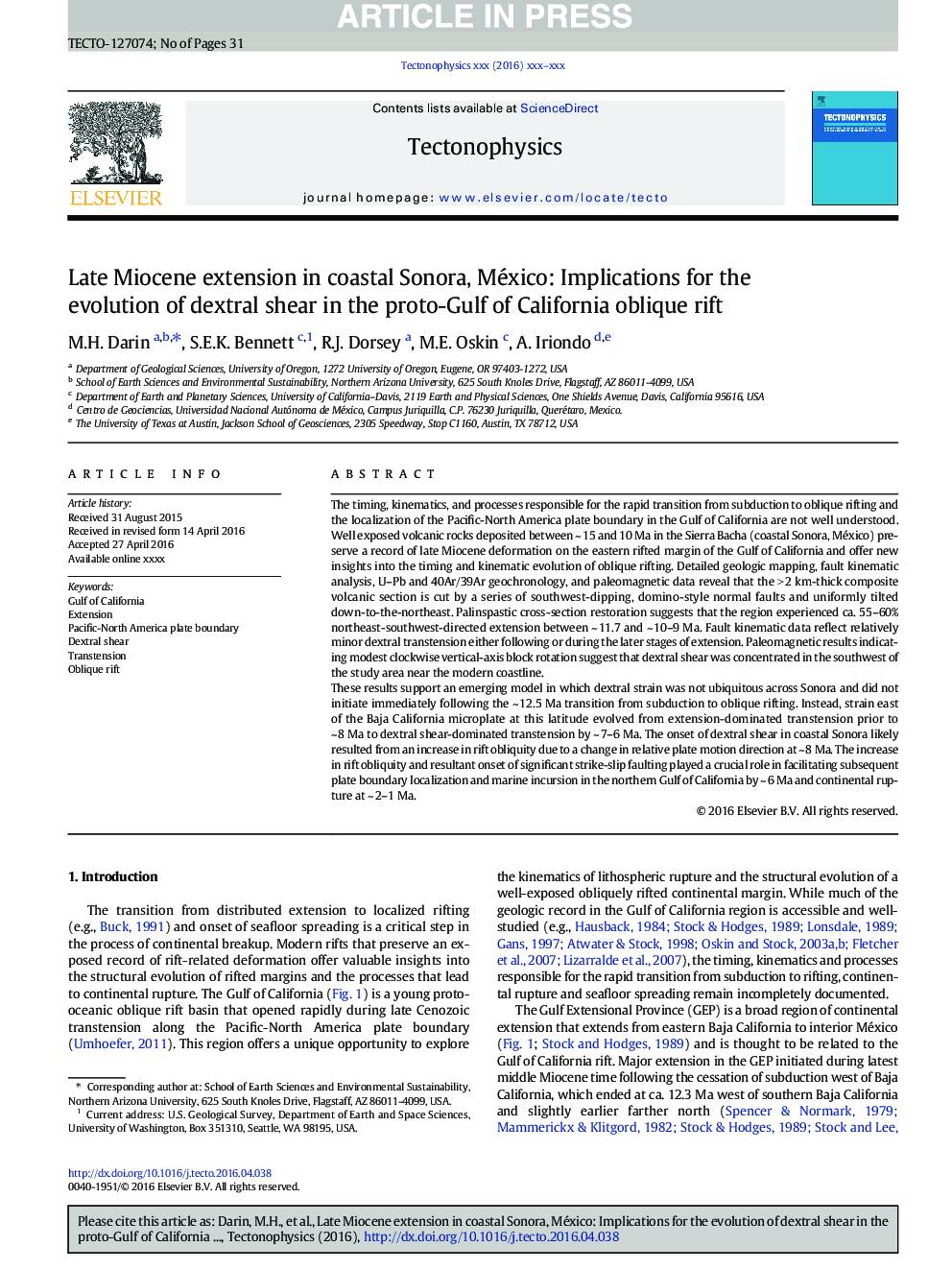| Article ID | Journal | Published Year | Pages | File Type |
|---|---|---|---|---|
| 5781771 | Tectonophysics | 2016 | 31 Pages |
Abstract
These results support an emerging model in which dextral strain was not ubiquitous across Sonora and did not initiate immediately following the ~Â 12.5Â Ma transition from subduction to oblique rifting. Instead, strain east of the Baja California microplate at this latitude evolved from extension-dominated transtension prior to ~Â 8Â Ma to dextral shear-dominated transtension by ~Â 7-6Â Ma. The onset of dextral shear in coastal Sonora likely resulted from an increase in rift obliquity due to a change in relative plate motion direction at ~Â 8Â Ma. The increase in rift obliquity and resultant onset of significant strike-slip faulting played a crucial role in facilitating subsequent plate boundary localization and marine incursion in the northern Gulf of California by ~Â 6Â Ma and continental rupture at ~Â 2-1Â Ma.
Related Topics
Physical Sciences and Engineering
Earth and Planetary Sciences
Earth-Surface Processes
Authors
M.H. Darin, S.E.K. Bennett, R.J. Dorsey, M.E. Oskin, A. Iriondo,
